When it comes to landscaping and deciding what types of plants and trees to add to your yard, the possibilities are endless. There are perennials, annuals, bushes, evergreens, deciduous trees, evergreen trees. Choosing what is best for you can be slightly overwhelming. One good place to start is by deciding what purpose each area of your landscaping will serve and what size of plants will work best in the space.
If you have chosen an area for privacy or to make a border between two areas, one very popular choice is the Emerald Green Arborvitae tree or bush. It is an evergreen variety of tree that is extremely easy to grow and provides a lush look that is also thick enough to form a screen. To learn more about this versatile tree and how to care for it keep reading for answers to some of the most popular questions about Emerald Green Arborvitae Trees.
What Does an Emerald Green Arborvitae Look Like?
The Emerald Green Arborvitae is an evergreen with a unique appearance unlike the needles you see on typical evergreen trees. Its foliage looks like a flat, scaly, fan-like spray. The color is a glossy, bright green, hence the name “emerald”. Arborvitaes are a semi-dwarf evergreen and grown in a narrow, pyramidal shape. This makes them a popular choice for forming them into decorative topiaries.
These trees are one of the thickest evergreens you can plant making them perfect for privacy or hedge landscaping. The cones are about ½ an inch long and shaped like an urn. Another great feature of these arborvitaes is that they do not lose their lustrous color in the winter.
How Big Do Emerald Green Arborvitaes Grow?
An Emerald Green Arborvitae can grow as tall as 20 feet, however, most typically only grow up to 7 – 15 feet. Depending on how they are used in landscaping, many homeowners choose to prune them to stay about 12 feet tall. They average about 3 – 4 feet wide.
Why are they so popular?
When it comes to choosing an evergreen to accent your landscaping or plant near the house, the Emerald Green Arborvitae is a top pick. They are a popular choice because they are easy to grow and look great planted close together to fill tight spaces or spread apart along a property line.
Arborvitaes never need trimming and their lush green foliage grows thick enough to make them a great choice for a privacy screen or planting next to a foundation. Other popular traits of this hedge tree are that they are disease resistant, grow to a great size for any area, and once they are established, they need little watering other than your typical rainfall.
This variety of evergreens are able to be grown in almost all areas of the country and are easy to find at most greenhouses and retail stores that sell plants.
Where Do Arborvitaes Grow Best?
Emerald green arborvitaes are a very adaptable tree that can be grown nearly anywhere. Its growing zones include Zone 3-8 when they are planted outdoors, and they are cold hardy to temperatures as low as -30 degrees Fahrenheit. They easily adapt to many soil conditions and do not have problems with weather conditions.
When choosing a place to plant your arborvitaes, keep in mind that they grow best in full sun but will also manage well in partial shade with afternoon sun being ideal. Full shade should be avoided as this reduces the fullness of the foliage. Soil should be well-drained but moderately moist.
How Do I Plant My Arborvitae?
The best time to plant your arborvitae is anytime in the Spring or Fall. Once you are able to dig because the ground is not frozen, you can start planting. These hedges can be planted as much as 6 feet apart in order to maintain a view of their pyramid shape. Or they can be planted as close as 3 or 4 feet apart for those trying to achieve a hedge or privacy screen look.
When planting this evergreen tree, the hole you dig should be as deep as the root ball and twice as wide. If the root ball sits lower than the surface around it, you will want to fill the hole in with the same soil you just dug out to make it more level. Their adaptability to any soil type assures that you do not need to add any extra topsoil or special compost around the roots. Fill the surrounding area with the same soil you dug out and tamp down to remove any air pockets.
After planting give your new trees a good watering, about 3 gallons for each one. It is also recommended that you surround the tree with shredded mulch. It should be about 3 feet around and 3 inches thick to help preserve a consistent amount of moisture around the base.
What Type of Care Do Arborvitae Trees Need?
Water
After planting your tree, you will need to water it twice a week for the first month in order to help it establish a good root system. Holding the hose and counting to 20 is about a perfect amount of water each time. If you receive a good amount of rainfall in a given week you can water less. Dry and hot conditions may require you to water more often, especially is temperatures are consistently over 80 degrees.
Once the trees seem to be established you should be able to reduce watering to once a week. Again, pay attention to the weather and conditions of the soil, don’t be afraid to increase the amount if there is no rainfall or many hot days. After six months of growth, arborvitaes can easily live on only rainfall. They only require about ½ an inch of water on a weekly basis.
Pruning
One of the great traits of the Emerald Green is that it does not need pruning. It grows in an attractive pyramidal shape on its own. Light pruning can be done if you want to keep the tree limited to a certain height. Some also choose to prune if they are trying to accomplish a more even hedge-type look. If pruning is done you want to us a sharp, clean shears. You should also try to keep the bottom wider with a taper to a narrow top.
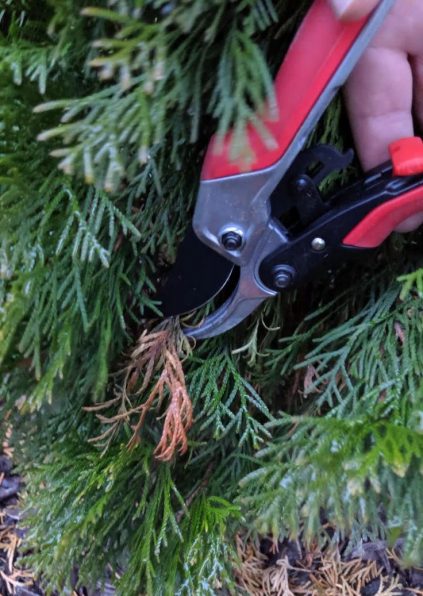
You should never prune your arborvitae back far enough to expose bare wood. Only prune the leafy parts at a symmetrical 45-degree angle. By doing this in the spring you can encourage thicker growth while keeping your trees looking well-groomed. It is also a good idea to remove any brown, dead branches or sections that could be diseased.
Fertilizer
Emerald green arborvitaes do not require extra fertilizer for proper growth.


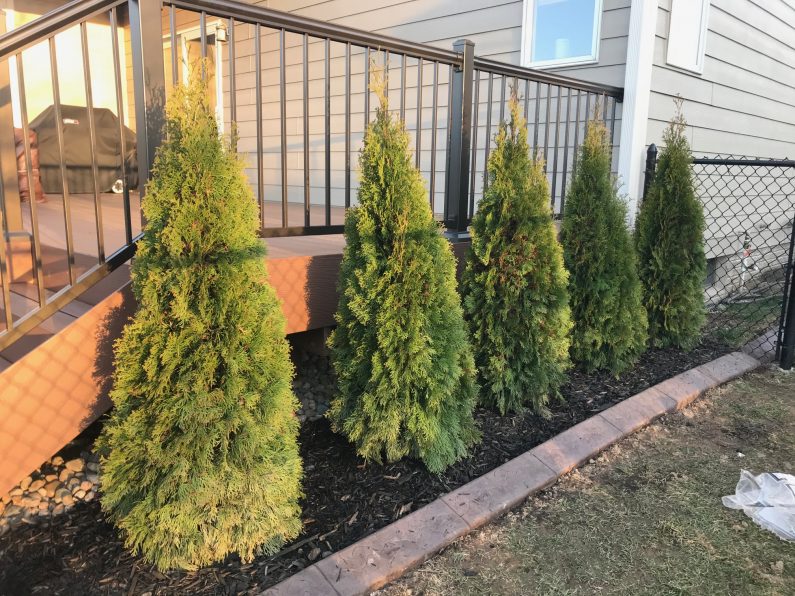
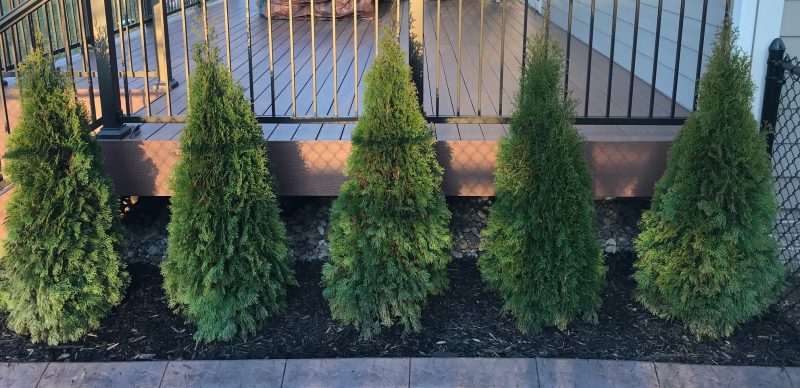
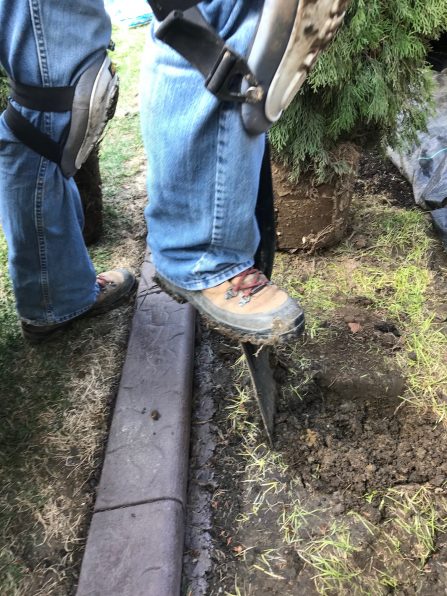
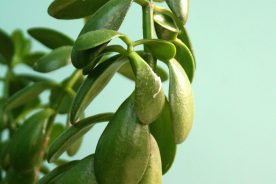
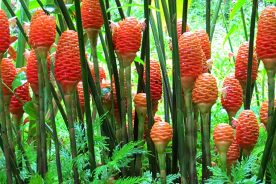
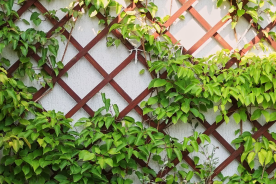

No Comments